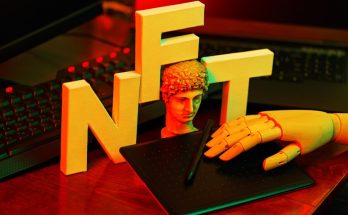The figures make a vivid picture: the play-to-earn gaming industry surged in the world market with the growth of 25.7% per annum in 2024 with an astounding increase to 26.59 billion dollars by 2034. It is not a passing gaming fad. The gaming community is finding out that it is possible to gain real money by fighting with digital monsters, creating a virtual world, and winning tournaments organized with the help of blockchain.
But why is there this meteoric rise? More to the point, is play-to-earn gaming the next stage in metaverse evolution or is it just a high-tech reversion of the old game economy?
What Is Play-to-Earn Gaming, and How Does It Work?
Play-to-earn games are essentially new forms of interaction because of being able to have real ownership of the digital asset in the world. As opposed to the traditional games where the acquired objects are closed in one ecosystem, the P2E games give players full access to their in-game assets using non-fungible tokens (NFTs) and smart contracts.
It all boils down to rewarding players with native tokens based on their performance in different ways: winning battles, completing missions, or buying or selling virtual land or voting in governance processes. These virtual assets have actual values in exchange of cryptocurrencies and peer-to-peer trading services.
There are various revenue sources that allow players to earn as much as they would in a part-time job: gathering rare NFT items, involvement in tournaments, virtual estate investment, and rewarding community activity.
The Present Day Market Scenario: More than Hype
Market Competence and Demographics
North America is on the forefront, with 37.4 percent of the international market share and yields revenues of $1 billion in the cycle of 2024. The USA is the only country with a forecast of hitting the mark of $0.80 billion in 2024 at a healthy compound annual growth rate of 24.2 percent.
The role playing games are the leading in the industry with a market share of over 34.7 and mobile games generate 38.6 per cent of the total figure. This is made possible by mobile-first strategy that has significantly reduced the barrier to entry by enabling casual players across the globe to engage in P2E gaming.
The most famous earning system is token rewards, and it consists of 42.8 percent of all P2E revenue streams. This demand indicates that players want to have liquid tradeable assets as opposed to being locked in game goods.
Top Games that Drive the Industry
Axie Infinity keeps being the gold standard, with more than one million active players and using the Ronin blockchain to keep transaction costs as low as possible. The newest developments added free starter Axies, thus lowering entry barriers greatly, as professional players can earn up to $2-20 a day, depending on ranks and market conditions.
The Sandbox aims to attract such major brands as Atari and Square Enix, and all users can create video games, own and earn money on it with the help of LAND NFTs and SAND tokens. Players earn income through creating games, trading virtual property, or creating virtual environments using land parcels acquired to construct.
Gods Unchained combines a classical card game experience with the usage of a blockchain, which is why since 2019 the game has over 500,000 registered players. The players earn NFT cards, engage in PvP battles to obtain GODS tokens, and trade rare cards, which can be rare, depending on the market needs and demand.
Metaverse Integration: The Meeting of the Virtual Worlds
Play-to-earn gaming and metaverse development convergences are much more than technological advancement; they are an indication of how economies are becoming digital-first. We are closing in on an era where digital investments and experiences are worth more than their physical equivalents as does the World Economic Forum indeed propose.
Compatibility and Accessibility with Cross-Platforms
The contemporary P2E games are becoming increasingly cross-platform-oriented, with players using VR headsets, gaming consoles, smartphones, and ordinary computers as access to virtual worlds. It is this flexibility that has changed gaming into ongoing virtual realities that become part and parcel of everyday life.
In the context of P2E metaverse, immersive tourism experiences remove geographical barriers and enable tourists to visit any destination, creating sources of income and revenues to the virtual tour guide and the virtual content creator. In the meantime, the presence of virtual reality makes it so that our environments have become hyper-realistic and thus difficult to distinguish between physical and digital experiences.
Social Gaming Evolution
To a greater extent, metaverse gaming can take the P2E to the next level to virtual worlds, as opposed to personal experiences. The players also create communities across games and between platforms, hosting events, organizing activity, and facilitating sustainable digital economies.
In such societies, professional strata are frequently formed, attaching guilds to offer novice players scholarships, share resources, and maximize joint earning power. These organizations make P2E games more democratized and establish clear avenues of training and earning skills.
Difficulties and Market Realities
Economical Sustainability Issues
Along with very promising growth rates, there are valid sustainability issues surrounding P2E gaming. To avoid inflation, token economies have to be balanced to keep the earning possibilities among the players. To sustain player revenues, live games need to continually bring in new players, which produce pyramid-like economic strains.
Genuine entertainment value replaces straight financial incentives as the priority of the successful P2E projects. An emphasis on active gameplay mechanics and collective earning levels ensures a higher long-term player retention and financial stability versus games which focus on other parameters; positive proof of this relationship has been presented by several developers.
Accessibility, and Digital Divide
Access to technology presents another significant obstacle to potential entrants into P2E around the globe. Internet within the high-speed connection, the device configuration, and even knowledge needs regarding cryptocurrencies may lock out the population living in various digitally developing economies.
Nonetheless, these issues are steadily being resolved with mobile-first P2E development and easier onboarding procedures. The use of smartphone capabilities in location-based games provides the opportunity to earn money based on the real-world movement and lowers the hardware requirements and increases the amount of people involved.
Future Outlook: Dynamics of 2025 and beyond
Artificial Intelligence Integration
P2E can be improved by the use of AI technology in flexible narratives, life-like NPCs, and customised learning scenarios. This is achieved by the different tutors being virtual and adapting to the different speeds of the learner and the games being able to change to suit the behaviour of the player and their likes and dislikes making it a more interesting and potentially more lucrative interaction.
DAOs and Governance decentralized Governance
Integrating decentralized autonomous organizations (DAOs), players involved in the game governance process have gained more earning opportunities and also have a say in the development-related decisions. Active participants are rewarded with the voting opportunities and ability to create proposals increasing the interdependence of players and platform prosperity.
An Increased Number of Applications to Industries
P2E mechanics are spreading to education and fitness, as well as professional training. Training on virtual gyms can be rewarded with various kinds of tokens, and educational websites gamify the experience of learning and provide cryptocurrency incentives.
Synergy using decentralized finance (DeFi) protocols will allow players to gain thanks to providing liquidity, lending, and intricate financial solutions in gaming. Such mixed applications are quite appealing to users who are interested in entertainment and maximization of the yield.
The conclusion: evolution or revolution?
Play-to-earn gaming is evolution and revolution in online gaming. Although the game relies on familiar gameplay mechanics, the concept of being able to own assets and make money entirely changes the nature of the connections between players and virtual worlds.
The extensive growth of the sector, enabled by huge corporate investments, as well as recent mainstream adoption, indicates that P2E gaming will keep on growing in the metaverse ecosystem. Yet, the ability to have lasting success relies on striking the balance between financial motivation and actual entertainment value.
Since blockchain gaming revenues are projected to reach $620 million per month in 2025, with P2E games constituting 62 percent of the business per month, there does not seem to be a lot of speculation in the trend. The solution is to build games that benefit players who perform well, exercise creativity, and serve their community not just those who are participants.
The onward-looking future of the metaverse can very well be play-to-earn, although only when given the foremost care is the player experience, rather than the economic ingenuity. Games that strike this balance are probably the next frontier of digital entertainment and will offer virtual worlds that help play, creativity, and earning exist in a new, coherent world.
The opportunities are real and even expanding, as far as players are concerned and opting to join the P2E gaming. It is, however, difficult to choose sustainable projects having the good mechanics of a gameplay and clear economic models. The next major metaverse trend is no longer a matter of making money out of gaming; it is a matter of reinventing online experiences to provide strong value to the users globally.



